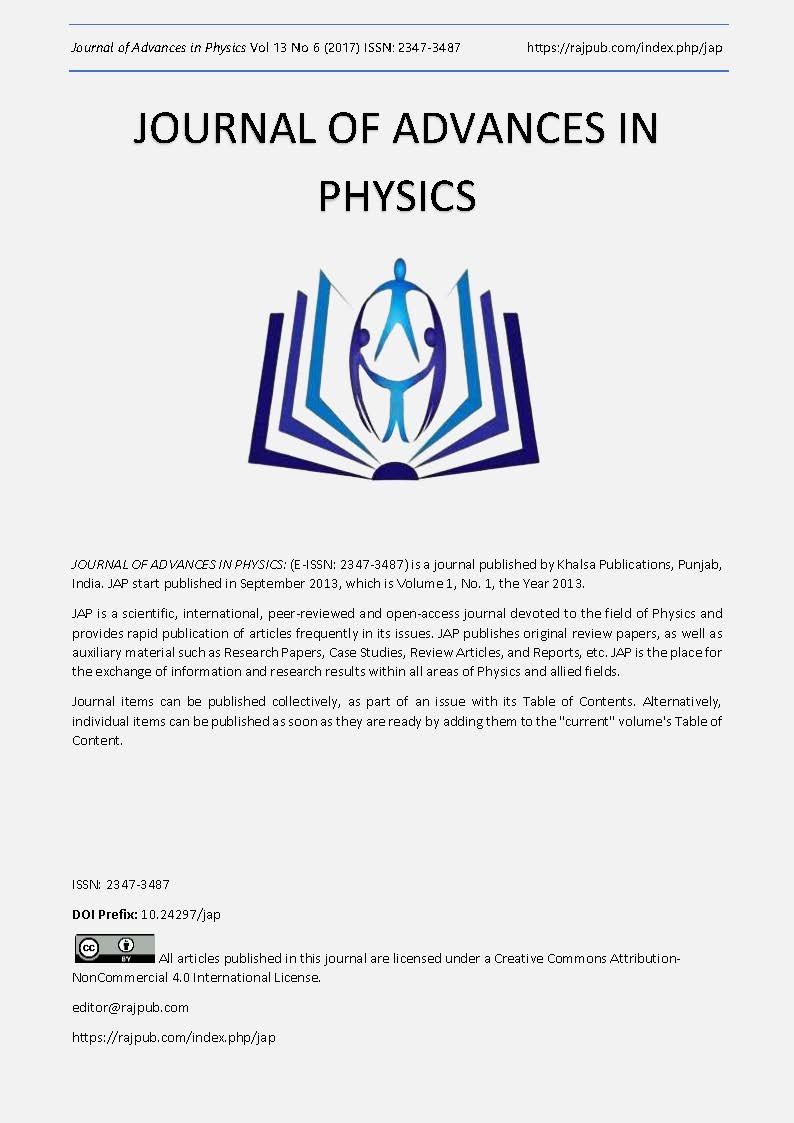Hydrogen production using Al-Sn alloys prepared by rapid solidification
DOI:
https://doi.org/10.24297/jap.v13i6.6194Keywords:
Al-Sn alloy, Hydrogen generation, X-Ray Diffraction Analysis (XRD), Electrical Resistivity, Thermal analysis, Scanning electron microscope (SEM)Abstract
Air pollution produced by the direct burning of fossil fuels is a serious problem. Therefore, there is a vital demand for renewable and clean fuel replacements for future energy source. Hydrogen, which exhibits high calorific value and is a clean burning product, could be the first choice in the future, as it is a good-looking fuel for fuel cells where the electric energy is directly gotten by the electrochemical reactions of hydrogen and oxygen. Rapidly solidified Al100-x-Snx alloy X= (0, 25, 55, 75 all in wt.%) was prepared using melt spinning technique at 800 ºC. The structural and microstructural evolutions of the phases have been studied using X-ray powder diffraction (XRD) and the Rietveld method. Al45Sn55 alloy shows the best volume of hydrogen generation which is (531 ml), this alloy has the highest number of grains (1096) than other prepared alloys in its surface which examined through a Scanning electron microscope (SEM) and analyzed using an SPM data visualization and analysis tool (Gwyddion 2.32). Differential thermal analysis (DTA) was used for calculating melting temperature for all prepared alloys. Melting temperature reduced from 933.47 K for Al pure to 500.95 K in Al45Sn55 alloy. Temperature dependence of resistivity had been performed for all prepared alloys. Electrical properties of prepared alloys show the decrease in volume of the unit cell V with increasing VEC, which means that the volume of the first Brillouin zone increases by increasing VEC since they are inversely proportional to each other.
Downloads
References
2. M. S. Zou, R. J. Yang, X. Y. Guo, H. T. Huang, J. Y. He, and P. Zhang, Int. J. Hydrogen Energ. 36, 6478 (2011).
3. S. H. Yu, J. Y. Uan, and T. L. Hsu, Int. J. Hydrogen Energ.37, 3033 (2012).
4. X. Ma and M. R. Zachariah, Int. J. Hydrogen Energ. 35, 2268 (2010).
5. J. Macanás, L. Soler, A. MarÃa Candela, M. Muñoz, and J. Casado, Energy, 36, 2493 (2011).
6. K. Wegner, H. C. Ly, R. J. Weiss, S. E. Pratsinis, and A. Steinfeld, Int. J. Hydrogen Energ. 31, 55 (2006).
7. I. Vishnevetsky and M. Epstein, Int. J. Hydrogen Energ. 32, 2791 (2007).
8. C. Y. Cho, K. H. Wang, and J. Y. Uan, Mater. Trans. 46, 2704 (2005).
9. M. H. Grosjean, M. Zidoune, L. Roue, and J. Y. Huot, Int. J. Hydrogen Energ. 31, 109 (2006).
10. M. H. Grosjean and L. Roue, J. Alloy. Compd. 416, 296 (2006).
11. J. Y. Uan, C. Y. Cho, and K. T. Liu, Int. J. Hydrogen Energ. 32, 2337 (2007).
12. S. S. Martınez, W. L. Benıtes, A. A. A. Gallegos, and P. J. Sebastian, Sol. Energ. Mat. Sol. C. 88, 237 (2005).
13. O. V. Kravchenko, K. N. Semenenko, B. M. Bulychev, and K. B. Kalmykov, J. Alloy. Compd. 397, 58 (2005).
14. M. J. Baniamerian and S. E. Moradi, J. Alloy. Compd. 509, 6307 (2011).
15. K. S. Eom, E. A. Cho, and H. S. Kwon, Int. J. Hydrogen Energ. 36, 12338 (2011).
16. M. J. Kim, K. S. Eom, J. Y. Kwon, E. A. Cho, and H. S. Kwon, J. Power Sources, 217, 345 (2012).
17. A. Norbert and H. Sven, Energy, 31, 1395, (2006).
18. H. S. Yoo, H. Y. Ryu, S. S. Cho, M. H. Han, K. S. Bae, and H. H. Lee, Int. J. Hydrogen Energ. 36, 15111 (2011).
19. K. S. Eom, M. J. Kim, S. K. Oh, E. A. Cho, and H. S. Kwon, Int. J. Hydrogen Energ. 36, 11825, (2011).
20. J. C. Ingersoll, N. Mani, J. C. Thenmozhiyal, and A. Muthaiah, J. Power Sources, 173, 450 (2007).
21. M. Nestoridi, D. Pletcher, R. J. K. Wood, S. Wang, R. L. Jones, and K. R. Stokes, J. Power Sources 178, 445 (2008).
22. S. Trasatti, J. Electroanal. Chem. 39, 163 (1972).
23. M. Q. Fan, F. Xu, and L. X. Sun, Int. J. Hydrogen Energy. 32, 2809 (2007).
Downloads
Published
How to Cite
Issue
Section
License
 All articles published in Journal of Advances in Linguistics are licensed under a Creative Commons Attribution 4.0 International License.
All articles published in Journal of Advances in Linguistics are licensed under a Creative Commons Attribution 4.0 International License.




